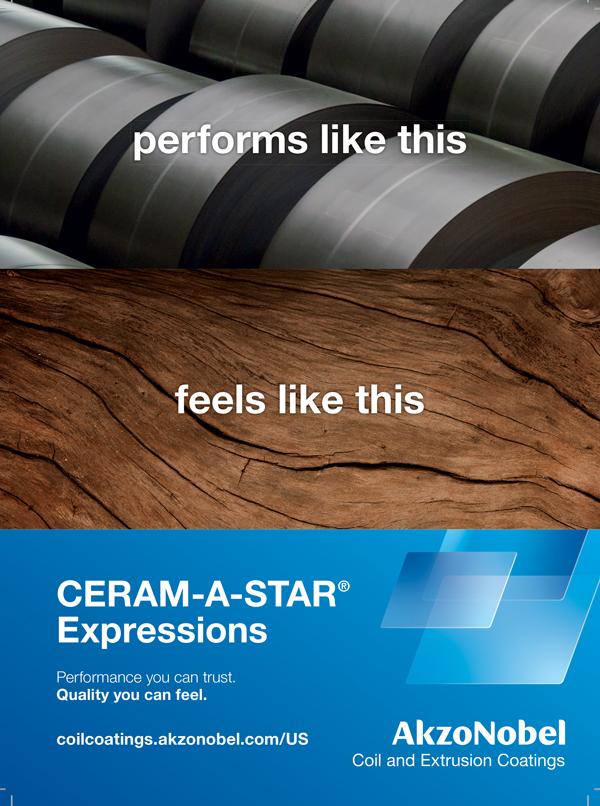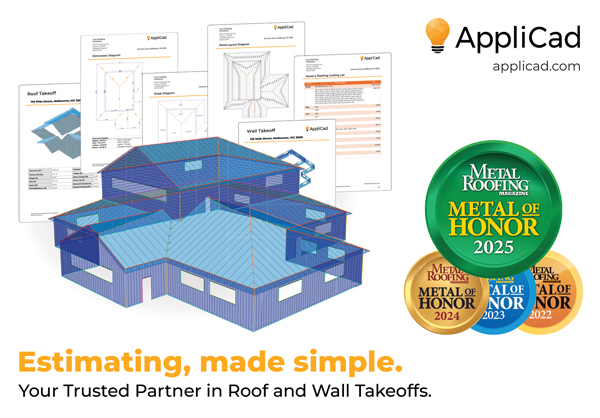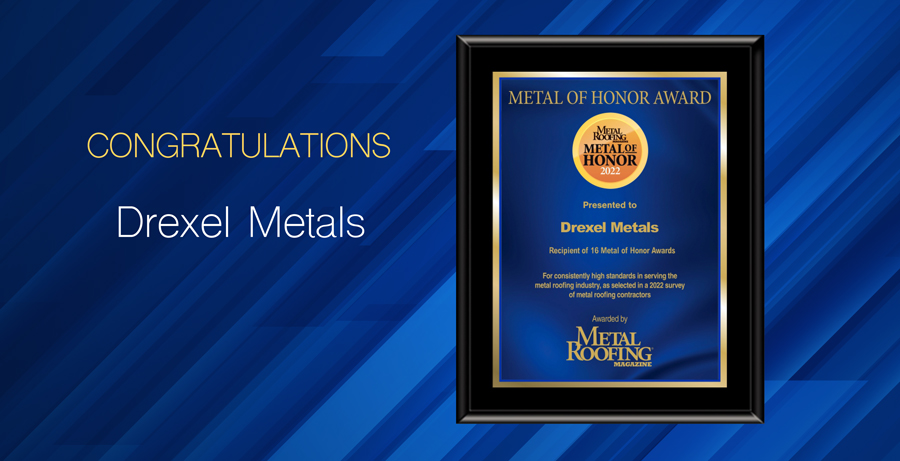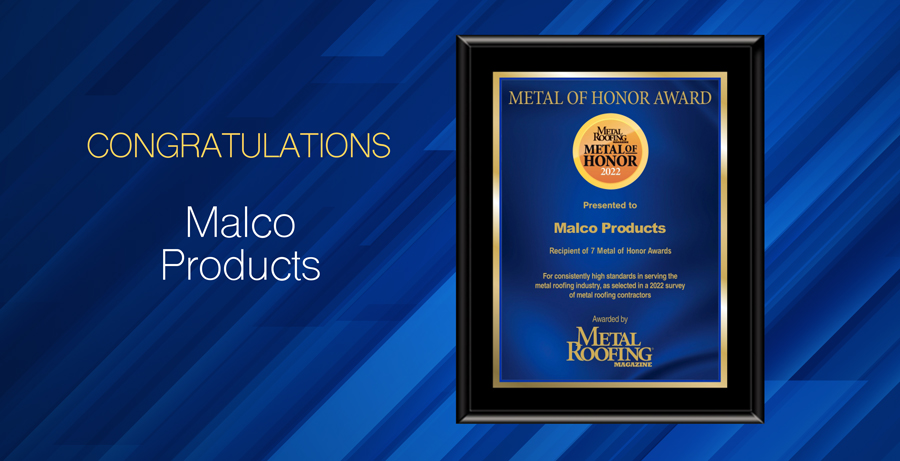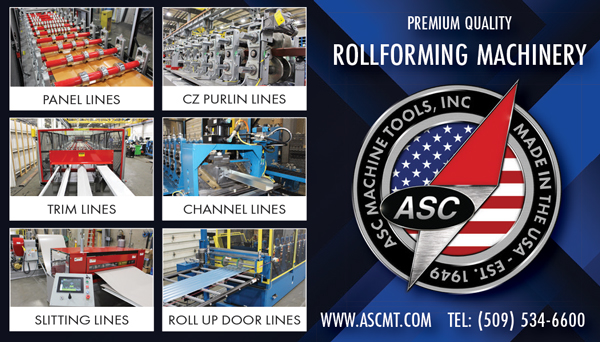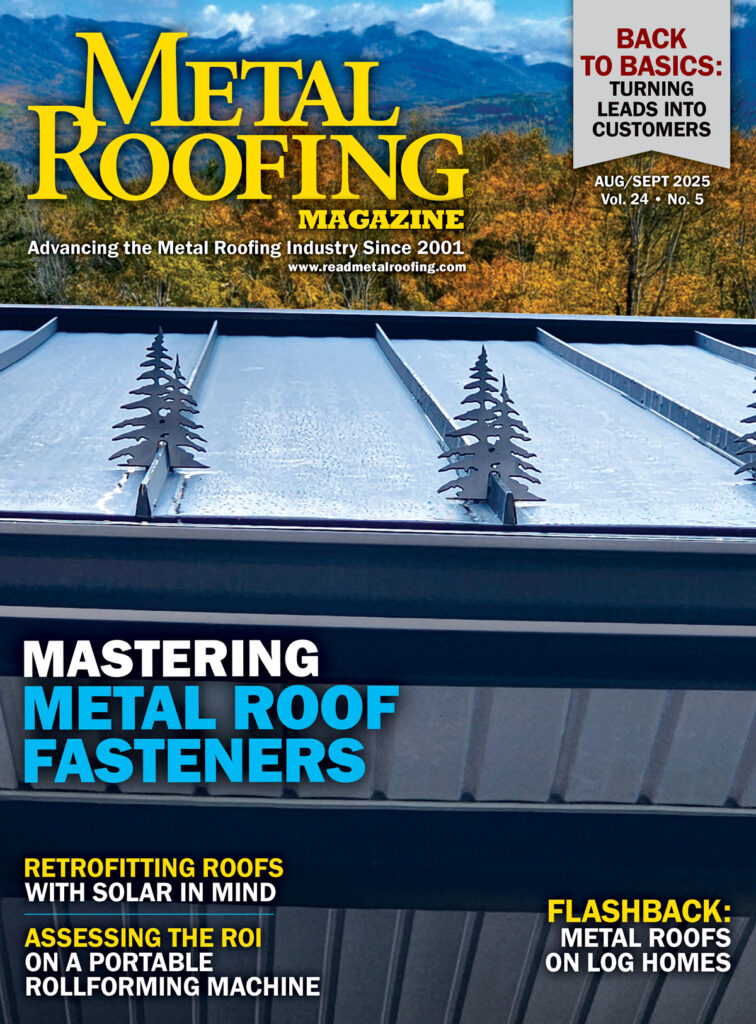By Linda Schmid
The Basics
Well-executed, mechanically seamed roofs can perform effectively for 60 years up to 200 years, depending on the material used. Seamer manufacturers and industry veterans shared what they know about seaming for quality and longevity.
Depending on the roof to be installed, you may need to rent a specific seamer; some roofing seams are proprietary, making it necessary to use the seamer the panel manufacturer specifies. Naturally, if renting a machine, the owner will do the majority of the maintenance on the machine, but there are still some things you can do to improve the machine’s performance.
Before you begin seaming, make sure you have peeled back the protective film used to prevent damage during the roll forming process, shipping and installation. If you do not, it may tear during the seaming process due to the added thickness and it can get messy. Further, ensure that the panels are clean so the rollers do not pick up sand, lubricant or other debris, possibly leading to marking up or even damaging the roof panels.
The machine should be cleaned daily. If you are renting a seamer for several days, the cleaning will fall to you.
If you own your own machine, then there is more maintenance required, although it is pretty basic. Store the machines where they won’t get wet; the protective rubber gaskets can rip, leaving the machine exposed. Occasional lubrication will also be required. If you are seaming a roof with a Kynar coating, be sure to use a compatible lubricant that will not mark it up.
Ensure that the bolts are tight before you start a job.
Folding Issues
When making the second fold, the inside leg needs to be short enough that it will not over-fold. In effect, the seamer needs a little space between the end of the leg and the next fold. This could happen because the panel is imperfect.
Some experts believe hand seaming at the ends or hand seaming the whole roof may resolve some folding problems. Of course, it may take 30% more labor, but it won’t take as long as waiting for new panels to be delivered. However, beware that you are not double-locking the panels you hand crimp because it will be very visible and aesthetically unpleasing.
Riding Off The Seam
If the seamer rides up off the seam, it can be the result of a build-up of mastic on the rollers. This can be prevented by cleaning off the mastic with denatured alcohol before beginning seaming. It could also be the result of incorrect crimping or seamer replacement. With many types of seams, hand crimping is required to get the seam started, then the seamer continues the fold. If the seam is started wrong, it will be continued wrong. If the panel is not installed in correct modulation, it will cause problems with the crimping and seaming procedure.
A little quality control can eliminate any of these causes of the ride up off the seam and it is worth taking the time to prevent. It is very difficult to fix once the seamer has “gone off the rails.”
Dancing Seamers
If the machine does not have on the correct wheels for the roofing and they are not making contact with the panel, then the seamer may “dance” from side to side. On other models, if the wheels are actually touching the pan, it could cause upward pressure and make the seamer ride off the rib. The wheels need to be riding above the pan 1/4” to 3/8”.
The seamer may act this way if something interferes with the even surface of the panel. For example, Miami Dade code requires a long, heavy clip, and if you tighten the seam too much, the thickness of the panel varies and the seamer will dance trying to get past the clip. Also, you could teeter-totter the seamer if you walk on the panel you are seaming.
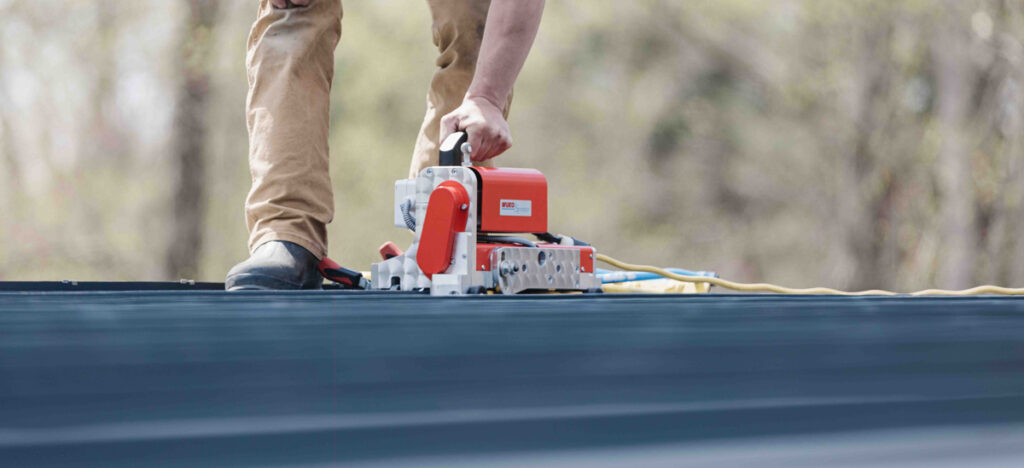
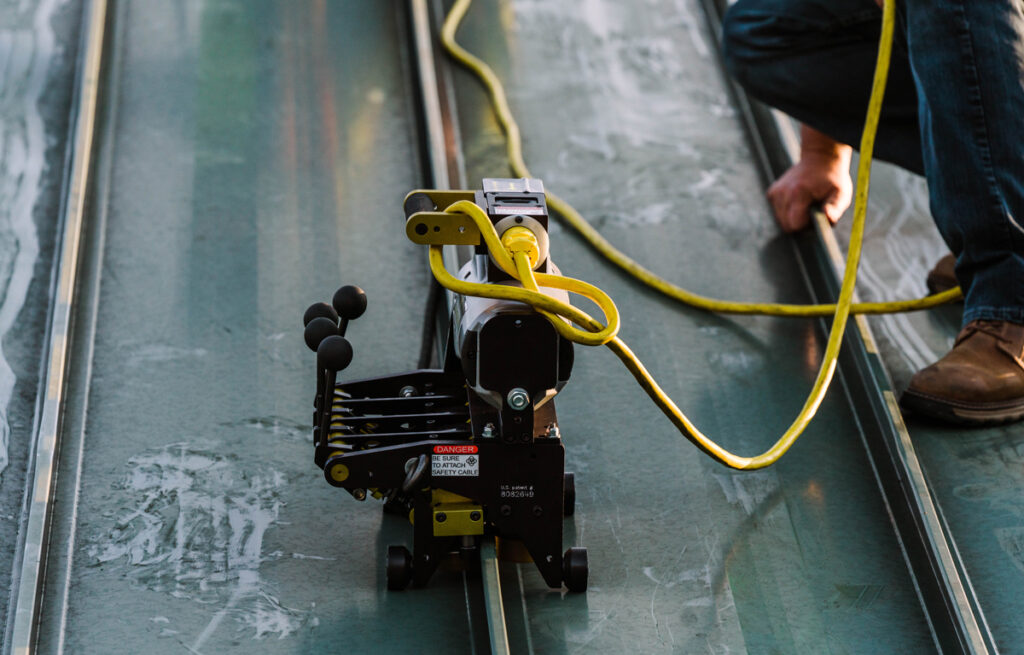
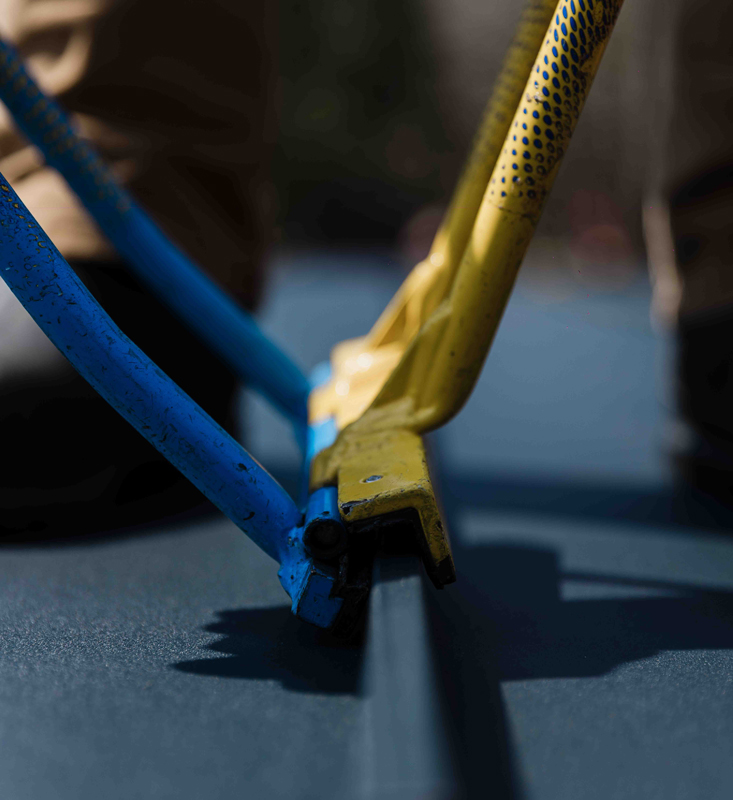
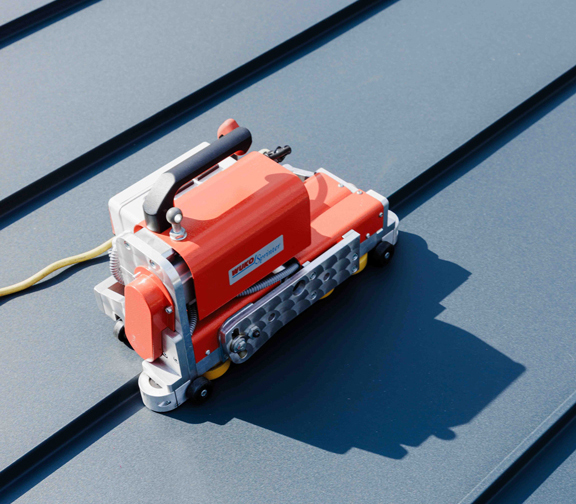
The Do’s and Don’ts of Seaming
• DO check that the panels are as specified before starting.
• DO read the manufacturer’s manual. They are usually short and will prepare you for situations that can arise.
• DO start slow. Watch the seam being made so you can catch any problems early on, stop the seamer, and make corrections.
• DO start loose and tighten the seamer if you experience dancing. Too loose can be adjusted by hand. Too tight can cause roof issues over time.
• DO stop if there is a quality control issue, for example the panel paint is scraping off. If you keep going, hoping it will straighten out, you will only make the problem worse.
• DON’T continue hand seaming if it is scratching the finished roofing. Check the seamer to see if it has nicks or other damage. Inserting a soft, thin cloth between hand seamer and panel, depending on the seamer and the tolerances involved, could resolve the issue.
• DO try to fix an error in a seam with a hand seamer. DON’T resume mechanized seaming until the seam is amended.
• DO order an extra panel or two and start seaming on the ground or a bench to get the machine set up. You don’t want to try doing it up on the roof and risk destroying the first panel.
• DON’T allow the seamer to run the seam without someone tracking it. It can run right off the roof if you aren’t careful. The best way to avoid this is to tie it off with a lanyard.
• DO check periodically to see if the seamer is seaming as tight as it did at the beginning. Adjust if needed.
• DO use a 100-ft. 10 gauge electrical cord no further than 100 feet from the power source and you won’t burn up the motor brushes.
• DO watch the electrical cord to ensure that it doesn’t get caught up on something.
• DON’T try to trouble-shoot issues on a rented seamer. The owners know the machines best, so if you run into problems, contact them. They should be able to walk you through fixing the problem, send someone out to help you, or provide a replacement machine.
• DO clean factory-applied roofing sealant from the rollers with a rag or fine wire brush and carburetor cleaner.
• DO consider purchasing your own seamer if you roll form and install the same type of roof over and over. Also, a seamer can be picky about such things as bolt tightening and if the same person works with the same machine all the time, they will soon learn the best way to handle the machine. MR


